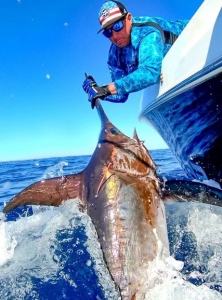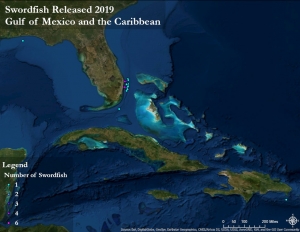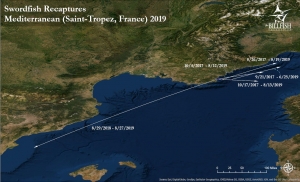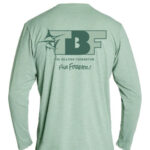
The Billfish Foundation maintains the largest private tag and release database in the world, with over 260,000 records. In 2019 alone, over 11,000 new tag, release, and recapture records were added to this database, representing an enormous amount of data to help us learn more about billfish life history. Of these over 11,000 new records in 2019, 304 were of swordfish, including 13 swordfish recaptures. 17.3% of swordfish were released without tags, while 82.7% were tagged. To learn more about how to identify a swordfish, check out our youtube channel!

Tags:
A total of 224 swordfish were tagged in 2019. The majority of these fish, 218, were tagged in the Atlantic Ocean, while only five were tagged in the Indian Ocean and one was tagged in the Pacific. 89 anglers and 27 captains tagged swords out of only five countries; USA (184), France (34), Japan (1), Kenya (4), and Saudi Arabia (1). On average, these fish were relatively small, 54.3 lbs (24.6kg).

Swordfish tagging is far higher in South Florida than anywhere else, thanks to SoFlo based tagging captains like Nick Stanczyk, Henry Dombroski, and Travis Whitfield. Recently, however tagging effort has increased dramatically in the Mediterranean, thanks to the efforts of Samuel and Rudy Urbain. For 2020, TBF also expects a surge in tagging effort of the west coast of the US thanks in big part to the Offield center for billfish studies. These new location are very exciting for swordfish research, as TBF is currently working hard to use this data to learn more about swordfish habitat utilization and migration in the regions.

Swordfish tagging is fairly consistent throughout the year, though peaks are seen in January and October. Tagging drops off in the late spring before picking back up for summer, as well as drops off in the early winter before picking back up in January.

Releases:
Swordfish releases were quite low in 2019. Only 47 swords were releases by a total of 8 captains and 8 anglers. All of these fish were caught and released in the Atlantic, out of the USA and the Dominican Republic.

Swordfish releases were fairly consistent throughout the year, though, similar to swordfish tags, a large peak in effort occurred in October.

Recaptures:
Swordfish recaptures were plentiful this year, which is very exciting! 13 total recaptures were concentrated in South Florida and the Mediterranean, reflecting the location of the majority of tagging effort.
All nine South Florida recaptures occurred in the area between Vero Beach and the Keys. Time at large was fairly consistent. Seven of the nine recaptures occurred in less than a year of tagging, the other two occurring in 13 and 15 months. All swordfish were recaptured during the colder months, from October to April, with most recaptured in January and February.

The Mediterranean saw five swordfish recaptures in 2019, an incredible feat considering before 2019, no swordfish had ever been recaptured in the Mediterranean. Giving credit where it is due, every recapture in some way involved father-son duo Rudy and Samuel Urbain, a duo that TBF is thrilled to have on our team.
Swordfish in the Mediterranean spent a longer time at large before being recaptured as compared to South Florida. Four of five recaptures occurred 1.5 to 2 years after the original date of tagging. Only one recapture occurred almost exactly one year from date of tag. Also notable was the time of year. All fish were tagged between August and October, and all but one were recaptured in August (the fifth being recaptured in June).

We are so grateful to all who tagged and released swordfish in 2019. This data is absolutely essential for learning more about swordfish life history and bolstering their conservation. To learn more about tagging, check out our website. To purchase tagging equipment and other TBF essentials, check out our online shop! To stay up-to-date on all things billfish, subscribe to our monthly newsletter, become a member, and follow us on social media, @TheBillfishFoundation.






